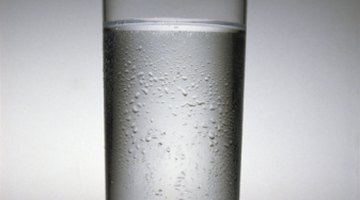Causes & Effects of Condensation
Condensation is the process under which water vapor in the air turns into a liquid form. It occurs when warm air hits a cooler surface. A common example is the condensation that forms on a glass containing a drink that is colder than the air temperature.

Condensation can be problematic within buildings and is often caused by a combination of heating, ventilation and insulation.
Surface Condensation
Domestic activities such as bathing, showering, laundry, dishwashing, cooking and certain types of heating, including flueless gas heaters and paraffin heaters, cause enough warm air to produce around 17 liters of water per day. Even breathing can cause condensation. With adequate ventilation this condensation is not problematic. However, modern homes with energy-efficient, dual-paned windows can lack sufficient ventilation and, as a consequence, mold forms.
Interstitial Condensation
Interstitial condensation occurs when warm, moisture-rich air diffuses into vapor-permeable structures and materials such as porous brick walls and insulation materials. If one side of the wall is warm and the other side is cold, condensation forms inside, causing rot and decay. Suspended flooring, such as wooden floor boards can also suffer from this, and water will collect on the underside of the boards and gradually rot them.
Problem Condensation
Condensation generally evaporates back into the air. However, you have a problem if the condensation remains on surfaces throughout the day, even when the temperature outside has warmed up; the condensation is running down the walls; the air smells musty; or mold, fungi and mildew are clearly visible.
Health Concerns
Humidity, mold, fungi and mildew can cause allergic reactions, skin irritations and respiratory problems, including asthma. These can be particularly harmful to vulnerable members of the population, such as infants and frail seniors.
References
Resources
Writer Bio
Helen Harvey began her writing career in 1990 and has worked in journalism, writing, copy-editing and as a consultant. She has worked for world-class news sources including Reuters and the "Daily Express." She holds a Master of Arts in mass media communications from Cambridge University in the United Kingdom.
Photo Credits
- Jupiterimages/Photos.com/Getty Images
- Jupiterimages/Photos.com/Getty Images
More Articles



